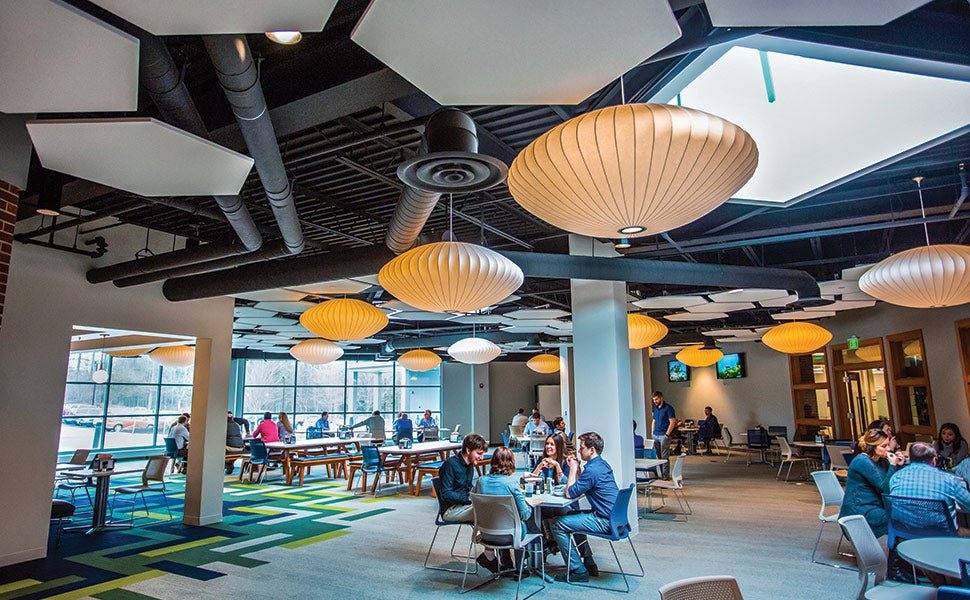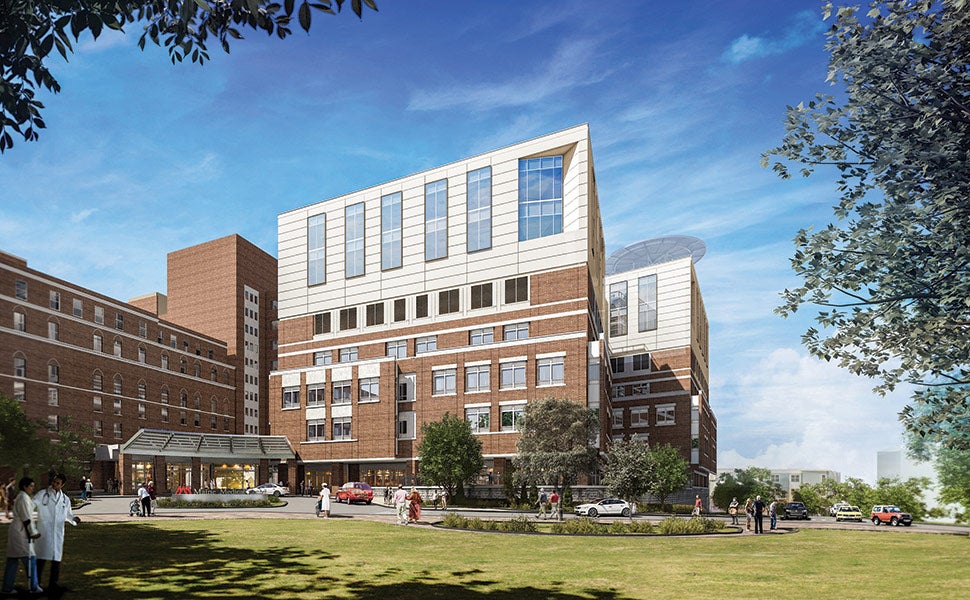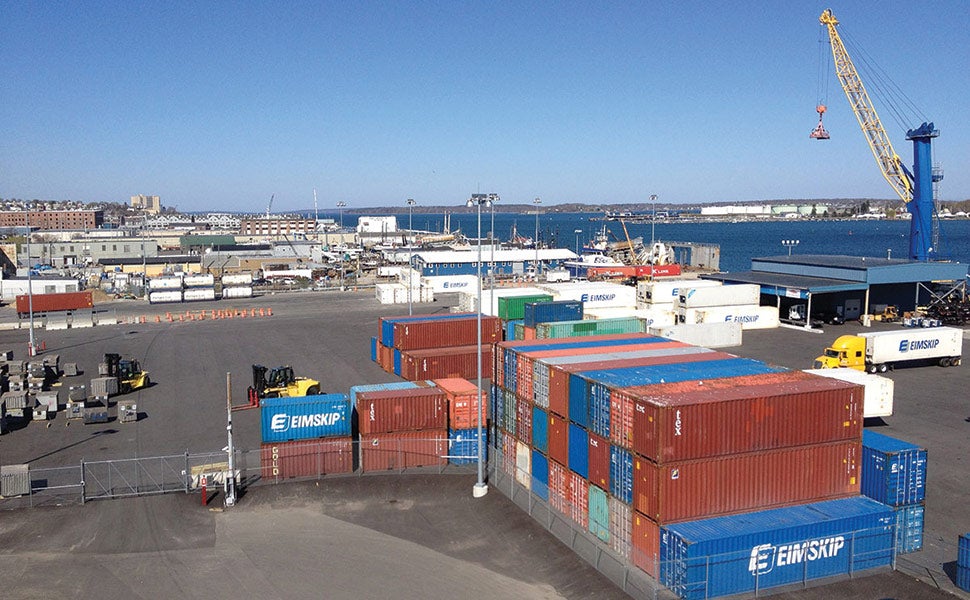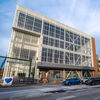5 hot spots in Maine’s economy
Maine’s tourism, trade, real estate and craft brewery industries all enjoyed rising tides in 2017, while the state’s health care providers invested heavily in expansions to meet the growing demands from Maine’s aging population. And there were promising developments in burgeoning markets like aquaculture — including a proposal to build one of the largest land-based salmon farms in Belfast, expected to be a $500 million project.
“We’re trending in the right direction,” says public policy analyst Jim Damicis, senior vice president of Camoin Associates. He cautions that perennial challenges threaten to stifle economic growth.
Aging roads, ports, rails and bridges need major upgrades, while broadband infrastructure doesn’t offer enough coverage or fast-enough capacity to support growth. And then there are Maine’s demographics: the state’s aging population and tepid population growth contribute to a tight labor market, and threaten to slow potential development. And then there is the concentration of development in the southern part of the state.
“Rural and urban markets are not competitive on their own,” says Damicis. “They need each other to survive in a symbiotic relationship.”
That said, there has been lots of economic news to cheer. Here are five hot spots in Maine’s economy to watch in 2018.
Rural and urban markets are not competitive on their own.They need each other to survive in a symbiotic relationship.
1.Tourism
The number of visitors to the state reached a five-year high in 2017, with 36.7 million people visiting the state, according to the Maine Office of Tourism. That was up by 2.5% over the year before. Tourism supports a total of 106,806 jobs, or 16% of the state’s employment. Though the rate of growth slowed compared to the five-year average, and tourism-related expenditures were flat at $6 billion, there were some encouraging signs. The number of first-time visitors to Maine hit a five-year high of 5.3 million. Off-season visitation also grew — there was a 3.5% increase of visitors in the fall and a 13% increase in winter tourists. And 2017 was the busiest year ever for the Portland International Jetport, with 1.8 million passengers, an increase of 4.2% over the previous year. United Airlines doubled the frequency of its flights to Washington, D.C., while Delta Airlines started service to New York City and Elite Airways added Sarasota/Bradenton, Fla., service.
2. Real Estate
For real estate, the second-most-important driver of Maine’s GDP, 2017 was a record-setting year. The MEREDA Index, a quarterly measure of real estate activity compiled by the Maine Real Estate & Development Association, hit record levels through the first quarter of 2018. The index, a composite measurement of residential and commercial transactions plus new construction, was 100.4, up 4% from the year before. The growth included a wave of office expansion by Tilson Technnologies in Portland; Tyler Technologies in Yarmouth; WEX Inc. in Portland; Bangor Savings Bank in Bangor; and IDEXX Laboratories Inc. in Westbrook. Damicis said he is encouraged not only by the level of activity but the fact that it involves commercial, industrial and residential markets. The fact that industrial vacancy rates have hit an all-time low “is a real positive,” he said. Development of industrial properties will produce not just property taxes, but commercial activity that will create jobs and equipment that generate tax revenues, he noted. He also sees as a positive the wave of multifamily and mixed-use developments geared for young professionals, empty nesters and aging residents in need of assisted living. “Maine has always had a piece of land to build a house on,” Damicis said. “But there was a huge undersupply of multifamily and rental properties within commuting distance of employment centers. As job growth occurs, the people filling those jobs want to live closer to them.”
3. Health Care
A raft of health care expansions were announced and continued around the state in 2017. As aging demographics continue to stoke demand for health care services, that growth is expected to continue. Maine Medical Center won state approval for a $512 million renovation and expansion, expected for completion in 2022. In Bangor, Eastern Maine Medical Center continued its $305 million modernization project that began in 2013. The project includes the addition of a neonatal intensive care unit, a cardiac telemetry floor, consolidated cardiovascular services and a 24-bed cardiac critical care unit. Mercy Hospital filed a letter of intent with state regulators to proceed with the planned consolidation of hospital operations to its Fore River campus in Portland. Mercy expects to file a separate certificate of need with the state this year for an estimated $75 million project that would add 108,000 square feet for inpatient, outpatient, surgical, support and administrative services.
4. Breweries
The brewery industry continues to grow. Last year, 22 breweries opened, expanded or announced intentions to grow. Maine-based breweries and related local businesses had a nearly $228 million economic impact to Maine in 2016 and employed 2,177 people, according to a study released in March 2017 by the University of Maine School of Economics and the Maine Brewers’ Guild. Larger operators are establishing themselves as destination breweries, says Sean Sullivan, executive director of the Maine Brewers’ Guild. In Freeport, Maine Beer Co. tripled the size of its footprint. In Gorham, Sebago Brewing Co. opened a new headquarters and on-site pub. Orono Brewing Co. had plans to add a third location. The local industry is part of a national trend. Craft beer “is transcending its reputation as just for young people or hipsters, and more into those who like great food, locally-sourced goods and community engagement,” Sullivan says. “People enjoy the sense of discovery that comes with trying new beer styles and getting to know how the product is made, and the people behind it.” Maine Brewers’ Guild also made an effort to stoke international thirst for craft brews. In 2017 they commissioned a Maine Beer Box — a 40-foot refrigerated shipping container with 78 beer taps and a self-contained draft system — to go to Iceland to market the state’s craft brewers. The group plans to send another one to England in September.
5. Trade
Trade supports 180,500 Maine jobs, or nearly one in four. Since 2009, Maine jobs related to trade increased by 25.9%. Last year, 2,262 Maine companies exported $2.7 billion in goods and services to 176 countries. Wade Merritt, president of the Maine International Trade Commission, notes that while that’s down by 7% from the year before due to declines in key sectors like forest products and lobsters (after a 2016 spike that was an anomaly), the future for Maine’s international business community remains bright. One reason is recent investments in transportation infrastructure that have increased volume through ports like Portland by 41% to $262 million in 2017. Merritt said the global appetite continues to grow for products made in Maine, even beyond the lobsters, forest, agricultural and other natural resources that have traditionally led export activity. Now, there is growth in biotech, composites, advanced materials and life-science products like veterinary vaccines and geriatric medicines. Icelandic shipping giant Eimskip USA has increased its container ship service to Portland by 45%, to weekly trips, 52 calls a year. Maine Department of Transportation moved ahead with plans to bring a second crane to Portland’s International Marine Terminal, which is expected to help support additional traffic. Also in Portland, all eyes will be on proposals for a cold storage facility, which could work with the port to warehouse food-and-beverage products going through the port. While Americold Logistics LLC pulled out of its plans to build such a facility, the city is optimistic it will get built.














0 Comments